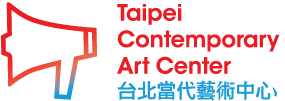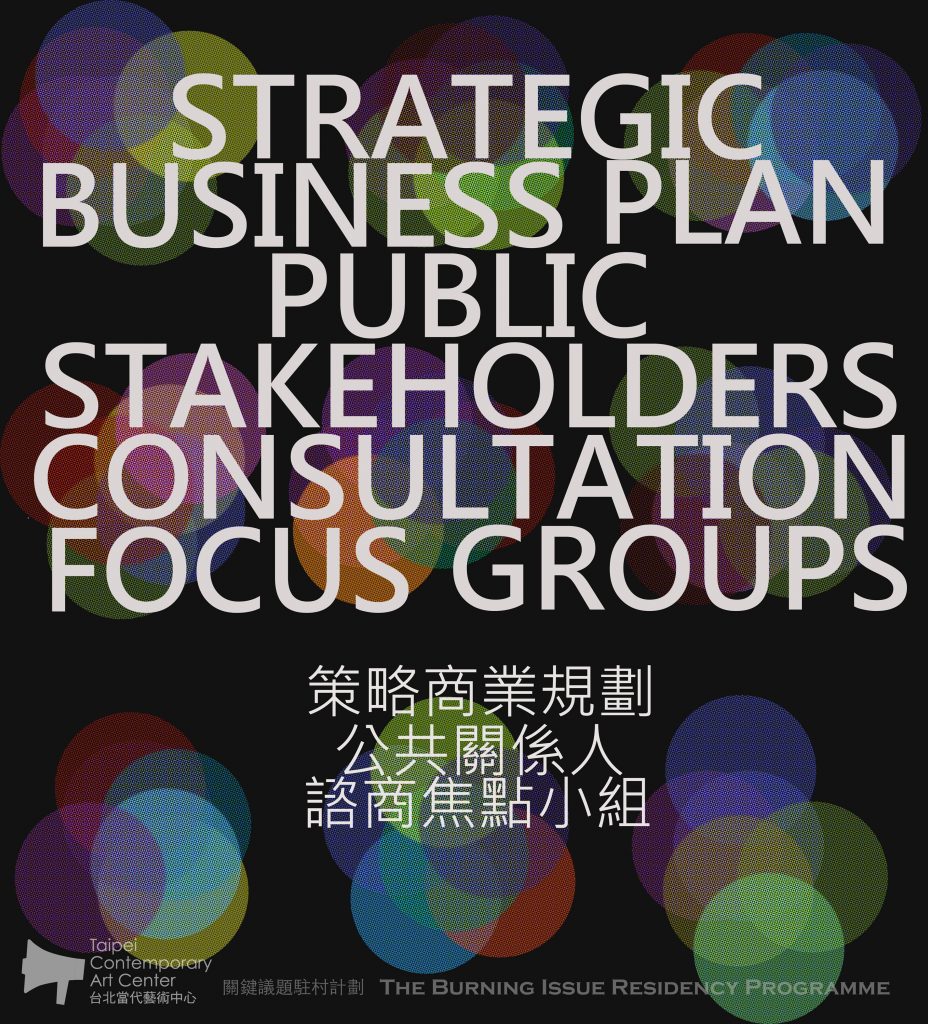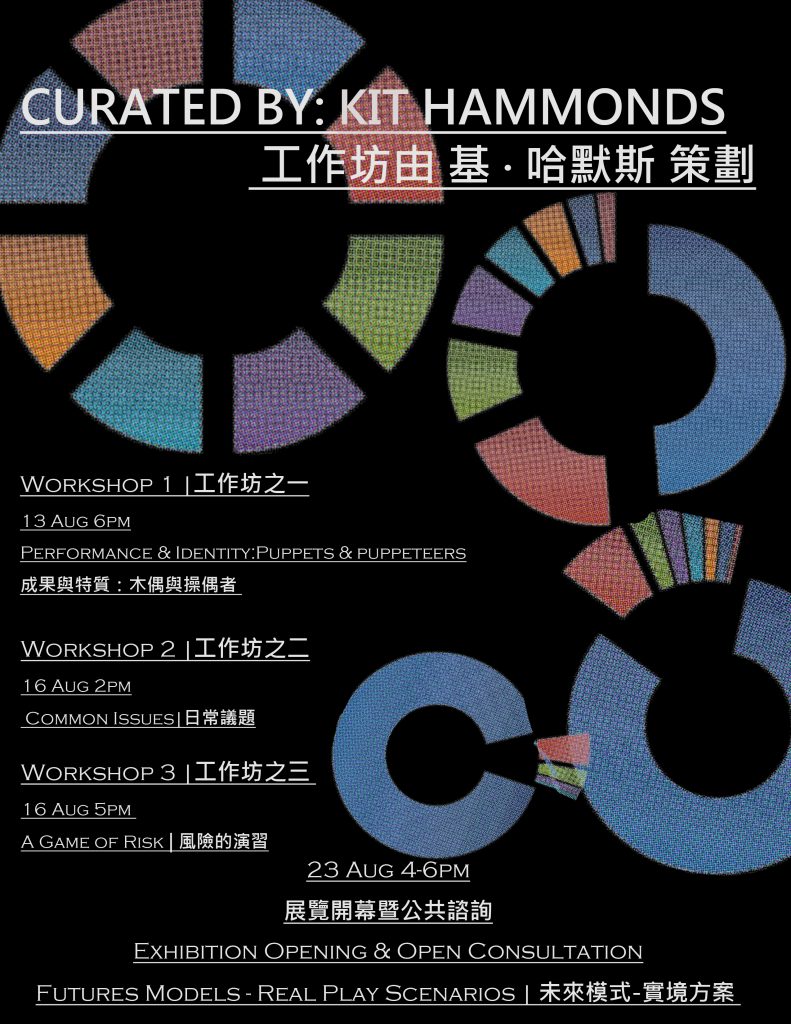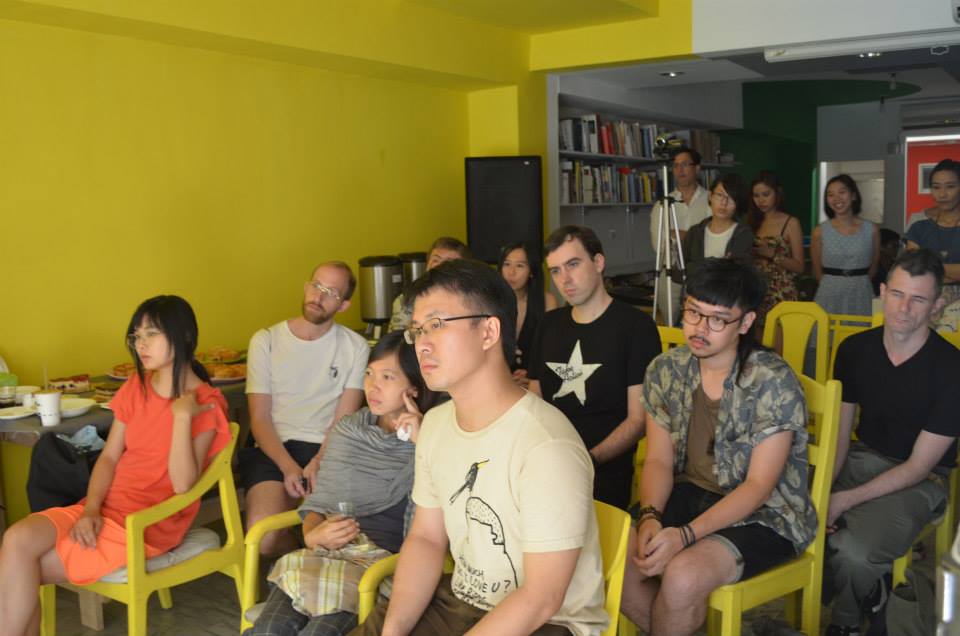The Burning Issue Residency Programme: Strategic Business plan Public Stakeholders Consultation Focus groups – Kit Hammonds
關鍵議題駐村計劃:策略商業規劃公共關係人諮商焦點小組 – 基‧哈墨斯
(For English please scroll down)
基‧哈墨斯
策展人,也是倫敦皇家藝術學院的資深講師,教授當代藝術。他最近的展覽包括在波多Serralves Museum的 blue lines, red threads: social tendencies in artists books(2014, 3-6月)、北京CAFAM雙年展(2014, 2-4月)。他於2004協同創辦Publish and Be Damned,在不同的博覽會、活動與刊物裡持續支持與呈現藝術家獨立出版的計畫,今年11月份即將與Casa Bosco和墨西哥瓜達拉哈拉的pa/per view展開合作。
策略商業規劃公共關係人諮商焦點小組
為了延伸TCAC目前進行中的 “Director in Residence” Kit Hammonds將為TCAC發展一系列的工作坊及講座,分析不同的商業模式以及它們隱含的意識形態。在TCAC的駐村期間Hammonds將舉行系列活動,透過參與式工作坊探討藝術機構的機制運作,工作坊中以藝術實踐來共同思考獨立藝術機構如何被形塑以及其活動面向。在駐村的期間的工作坊成果將成為TCAC未來撰寫綜合產業計畫的素材,計畫中會包含財務規畫、管理及機構在多變環境中的責任及目標。所有的活動都會公開並與TCAC“關係人”─大眾、機構成員、以及辦公室工作人員與協會理事們─共同參與、諮商的形式進行。主要的問題包含:在台北有哪些當代藝術的需求?TCAC為誰發聲、對象又是誰?它有哪些職業準則?而未來又有哪些適當且持續的資金可能?
焦點小組
三場工作坊將探討TCAC的形象與未來,並以商業用的創意演練作為操作方式,每場工作坊採用如遊戲般的形式,針對藝術機構中的替代空間之關鍵議題作討論,並探討未來的替代方向。
每個場次將會有一位藝術家作為觀察員的角色,其將以自身創作方式對工作坊進行現場記錄。此行是如同在某些商業決策的實行上藝術家被稱為“抄寫員”,將文本轉化為圖像或其他媒材之目的是為了創造對話的能見度,使之作為一個利於更為清晰楚的、決策的、整體的及非線性的觀點作議題切入,而此次工作坊中藝術家的記錄創作將作為成果展覽的一部分。
此次這三位抄寫員(藝術家)的陳述將作為一個展覽呈現,屆時並一同展出於公開諮詢中商業計劃書的初稿。
展覽開幕暨公共諮詢:未來模型 – 實境方案
透過這次討論,我們著重於思考藝術機構的營運之道。對於藝術家和機構主持人而言,生活層面資本化所致的經濟力被視為在該領域內取得成就的核心概念之一,越趨重要性的知名度亦是導致著前述資本化的成就。思想家如齊格蒙·鮑曼稱這種為“流動的現代性”,其中的消費主義和資本的可見性價值甚至超越知識和創造力的非物質價值。
主辦單位:台北當代藝術中心
專案主持人:鄭美雅
專案經理:彭若瑩
專案團隊:蘇珀琪、方彥翔、余政達、謝欣芳
專案助理:賴瑋婷
本計畫由文化部所贊助
Kit Hammonds
He is a curator and senior tutor in curating contemporary art at the Royal College of Art, London. His recent exhibitions include blue lines, red threads: social tendencies in artists books at the serralves museum, Porto, March – June 2014 and the CAFAM Biennale, Beijing, February – April 2014. In 2004 he co-founded Publish and Be Damned, an ongoing project supporting and presenting independent artist led publishing through fairs, events and publications internationally including the forthcoming fair in collaboration with Casa Bosco and pa/per view, Guadalajara, November 2014.
STRATEGIC
BUSINESS PLAN
PUBLIC
STAKEHOLDERS
CONSULTATION
FOCUS GROUPS
To extend the TCAC’s current Director in Residence, Kit Hammonds will perform a service to TCAC’s development by developing a series of workshops and presentations that analyse institutional business models, and the ideological positions they embody.
In the TCAC gallery a series of events will consider the influences on arts organisations through participatory workshops. Each will use artistic processes to collectively think about how an independent art organisation may be structured and what its activities should be.
Over the course of the residency, the outcomes of these events will be used as the source material for writing a collective business plan for the future development of TCAC, including financial plans, governance, aims and mission of such an organisation under changing conditions. All events will be public as a form of participation and consultation with “stakeholders” in TCAC: the public, the members, as well as its management and the board of directors. Key questions are: what services are needed for contemporary art in Taipei? Who does TCAC speak for and to? What are its ethics? And what are appropriate and sustainable funding possibilities to provide for its future.
Focus Groups
Three closed workshops will consider aspects of TCACs image and future. Using creative practices as applied in business, each workshop will take the form of a game with the aim of opening up discussion of the key aims of art organisations, particularly alternative spaces, and considering alternative directions for the future.
Each session will include an observing artist who will record the conversation using artistic means. Used in certain business decision making practices artists are referred to as “scribes”. The aim of moving away from text into image and other media is intended to create a visualization of the conversation as a whole, a non-linear perspective that facilitates clearer understanding and better decisions. The artists’ works will be presented as part of the concluding exhibition.
The three “scribes” representations will be presented as an exhibition, alongside a first draft of the business plan in an open consultation.
Open Consultation&Exhibition Opening | Futures Models – Real Play Scenarios
Through this meeting we will consider what constitutes success for an arts organization. While for artists and producers the capitalization of all aspects of life has led to financial success being seen as one of the core concepts of success in all fields. However, in recent years visibility could have become equally important, possibly even leading that of capital. Thinkers such as Zigmunt Bauman calls this ‘liquid modernity’ in which the visibility of consumerism and capital are valuable above and beyond even the immaterial value of intellectual and creative production.
What will the future look like | Opening Speech by Kit Hammonds
I will talk today about some of the background to this project, and the exhibition downstairs. The residency arose through a conversation about the future of TCAC and its apparent uncertainty. Not a temporary uncertainty, but as a permanent state of insecurity with the building, with the funding and with the organisational structure. In some ways, this is part of its strength. And in some ways it is not unlike other arts organisations, or other businesses. But what surprised me was that there was no business plan staking out a vision for the next 5 years.
This is not only normal in European organisations, but essential in the UK if an organisation is to receive funding. That an organisation could exist here without one seemed interesting and got me thinking about how the business plan is in some ways a speculative fiction. No one really works to directly achieve the 5 year plan. It is under constant revision. But it is an essential and time consuming document to produce that creates certain images: Firstly, it acts like a map of the world from the perspective of the organisation. Secondly, it speculates on the risks it might encounter and the risks it might take. And, finally, through this it creates a portrait of the organisation. While these documents are relatively dry reading, frequently focused more on the financial sustainability than anything else it seems to offer a potential to ask the question: What will the future look like?
Such a question has haunted us for a long time in the arts, although it has lost its potency in the last 30 years. Once the avant garde of modernism was imaging a new enlightened society through institutions and structures that pushed away the natural world in a better designed controlled environment. Our world would be made of machines for living in and new Babylon’s after this revolution.
In many ways we live in that world now. We are beyond the point when this is still a part of our aesthetic belief. Beyond what Fukuyama called ‘The End of History’, beyond the eschatologies of science fiction and fantasy alike. Instead the utopian islands are sunk beneath the rising tides of capitalism. Imagination in the arts focuses on the past instead, the sunk Atlantis. Where as business continues to imagine a future through models and business plans. Regardless of how precarious the system of global capital has proven to be, it continues to imagine a world at least 5 years into the future. It images the risks that might appear, and tries to convert them into opportunities, and sells these ideas.
Imagine a world where:
- You deliver work that normally takes months in a matter of days.
- You achieve unprecedented results.
- You design solutions and make decisions using the best possible knowledge and people.
- You rapidly secure your stakeholders’ ownership to make change happen – and stick.
- You and your people aren’t just productive – you perform.
Cap Gemini – Accelerated Solutions Environment.
The accelerated Solutions Environment was developed as a system based on ‘designshop’ a process invented by Matt and Gail Taylor, an architect and an educator working in the Bay area. Using counter-cultural approaches, particular those that put creativity and play at the centre of their approach, they developed a system to facilitate changes in thinking. Notably this is not about the individual thought but is a collective practice – as business are, despite their tendency towards hierarchy. The shift is primarily around ‘models’ of behaviour and structure. As one Accelerated Solutions Environment workshop leader describes it:
‘Their challenge was to create a physical environment, which would help humans to thrive and reach their potential. They also concluded that there is no such thing as a perfect model, but that some models are useful…
The hardest thing in the world when you get fixed on a model is that you stop learning. The brain physically stops making new neural patterns.
Our challenge is to find new patterns and bring together smart people and solve complex problems.’
Notably, to achieve these aims, the facilitators are drawn from artists and designers, not from business educators. ‘Creatives’ are highly valued in business for being able to bring new perspectives, to create new futures. But at the same time they are not particularly useful or satisfied in day to day working environments. It is through systems such as ASE that artists are absorbed into a capitalist thinking model. Some of them learn in the process, and it is in this fold back on itself that we may start to think of a new future.
The British artist Carey Young worked as a ‘scribe’ and facilitator in ASE. Although unable to talk about the process directly due to it being constrained through confidentiality agreements and intellectual property. But the access to the language of business at the highest level, which adopts the same language, if to different ends as those of the avant garde. This was made the most present in Young’s work ‘I am a revolutionary’ from 2001. In this work she was coached by a corporate training to perform and believe
‘It seems there is no ‘outside’ left, no clear position for critical distance that is not soon incorporated back into the flow of capital around the globe. I am a Revolutionary points to this in a cyclical sense: the artist and her helper appear suspended in a continuum of repetition, effort and belief that change may be possible’. – Carey Young 2001
It is clear that in artistic terms there is a sense of inevitable collapse and failure, while for the business person, they insist on belief – however artificial it may be. At that period in british art, there was a certain focus on business models and the ethics within them. Liam Gillick is perhaps the most well known and his work encompasses fiction as well as installation.
However hard you try it’s always tomorrow. And now it’s here again. Across the other side of town trauma had overwhelmed personal exchange. Something self-willed and determined had cut through the dusk. Pain in a building. We all called it The Big Conference Centre. It probably had another name in honour of somebody seriously compromised, but to us it was just The Big Conference Centre. And up on top there was a room. Twenty-second floor. Big, airy and false ceilinged. Windows down to the floor. Clad in silencing carpet.” – Liam Gillick, Discussion Island/Conference Centre, 1997
Undoubtedly, there is an implied critique in Gillick’s work, but even this has been fully absorbed into the system. His installations in galleries are now integrated into corporate headquarters and government buildings such as this in London. The corporate aesthetics turned into art, folded back into corporate buildings.
Such a process of doubling fall within the notion of a liquid modernity as defined by Zygmunt Bauman, where all actions are self-referential performances. The profits or advantages are in the imaginary futures, not in the material stocks. They perform ‘focus groups’ to gauge public opinion and test new products. They perform market research. They perform stakeholder meetings and community actions for ‘social capital’. But these things are frequently hidden forms of advertising that slip through the usual regulations – each action branded. For instance, large corporations ‘sponsor’ charity events in schools – but greatly benefit from branding school uniforms. In this way they adorn the bodies of children who regulations say should not be exposed to advertising in public space.
A corporation is LITERALLY the turning of a company into a body, in so much as it gives a company the same legal status as a human being. Nothing in the natural world has this same privilege. In fact, today corporations often have a greater status than the corporeal beings – partly due to them being financially more significant, and granted the rights to be international ‘residents’ – multinationals – more easily than humans who seek the same.
And increasingly the body wants the opportunity to play. Financial ‘masters of the universe’ – a term consciously taken from a toy – gamble to make money instead of trade in commodities, even making money from the end of the world. This is reflected in the new office environments epitomised by Google, in which they are set up to perform a playful company. There are even things in those offices that fall suspiciously close to art of the past, such as fluxus. It is odd that behind the scenes most arts organisations are closer to Gillick’s description of a bland conference centre. Here TCAC is different from most, but without the resources of google, any arts organisations may flounder – unable to simply provide the financial surplus that allows imagination.
So in this context, there is an argument to be made that businesses now operate at the forefront of aesthetics, defining the conceptual framework in which the future is imagined. And it is now time to ask the question, in what way would the arts be able to learn from businesses’ radicality, instead of maintaining the image that creative industries, particularly the independent art organisation, might stop living up to the image that they are expected to play to and fold the future back in on itself. That instead of sitting outside the corporate environment, or simply looking to gain financial support from it, might enter into a deeper negotiation on skills and, ultimately, ethics.
In the three workshops, each using different forms of play, we looked at the persona of TCAC, the cultural, financial and political landscape and how we might communicate between these positions. The final one created a game for imagining the risks and opportunities for an arts organisation. In some ways they created stereotypes of how we, as artists, curators and independent arts organisations, think about ourselves and the world at large. The workshops saw artists observing each with their own relationship to TCAC, and creating work to represent aspects of the discussion through their own artist practices. These were Wang Yu Chen; Wang Hong Kai and Teng Chao-Ming. And they included myself and Zoe, who is working as translator, but also experienced in running workshops observing dynamics within the groups. What is presented downstairs are edited outcomes of these workshops and will form the basis of some of my research towards a business plan, a highly speculative one, for TCAC as a model for alternative arts organisations. In addition, during this residency I have been assisting in the English translation of the origins of TCAC at the Weekend Gathering organised by Jun Yang as part of his project for the Taipei Biennale in 2008. This was essential to consider some of the nuances of operating here from those in Europe, and in identifying where similarities lie. I’d like to invite you all to add any comments about the models you see downstairs in the exhibition to enrich this research. For the future, and the models that we imagine for it are always speculative, negotiated and under constant revision.
Organised by: Taipei Contemporary Art Center
Project director: Meiya CHENG
Project manager: Jo Ying Peng
Executive Team: Frankie SU, Yen-Hsiang FANG, YU Cheng-Ta, Ashley Hsieh
Project assistant: Tiffany Lay
The programme is sponsored by the MINISTRY OF CULTURE




